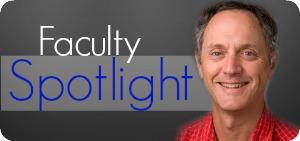
Duke is practically a second home for Dr. David Simel and we are so grateful to have all those years of experience influencing so many – our students, residents, colleagues, even internationally as he mentors others since1994 becoming the Editor of the JAMA Rational Clinical Examination Series! Here are the questions we asked Dr. Simel.
How long have you been at Duke?
I came to Duke in 1977 for Medical School, so 39 years (wow!, I never actually calculated that). I did my residency at Duke, took a year as Chief Resident, and then did one year of a Hematology-Oncology Fellowship before joining the General Medicine Division in 1986.
What are your responsibilities within the division? What does a typical day for you look like?
I’m the Chief of the Medical Service at the VA. We’ve got over 300 staff, including my general medicine colleagues in Hospital Medicine, my medical Chief Resident, and my Chief Resident for Quality and Patient Safety. I spend a lot of time talking to people, problem preventing, and problem solving. Have my own primary care clinic one morning a week where I have patients that I’ve now followed for 30 years – that’s continuity! I also spend about 4 weeks a year as a general medicine inpatient attending.
Could you tell us more about your role as a researcher?
I was in the first graduating class of the Clinical Research Training Program, receiving what was then called a Masters of Health Sciences in Biometry. I used those skills to start doing research in diagnostic accuracy, focusing on the history and physical examination as screening tests. While I was doing original work with primary data collection, at the same time I was embarking on a dual career in clinical administration as the Associate Chief of Staff for Primary Care. It was impossible for me to do everything well, so I shifted gears a little and starting mentoring research careers (John Williams, John Whited, Rowena Dolor, David Edelman to name a few of my early collaborators) of some of our fellows who were doing the real work of collecting primary data. I took advantage of some luck, and became the Editor of the Rational Clinical Examination Series for JAMA in 1994 which really expanded my opportunities to do distance mentoring of young researchers on an international level. The Series contains the first article that described “Evidence Based Medicine” (though I can’t claim credit for that one), and we just published our 104th article at the end of December on the examination of the patient who suffered minor head trauma. A lot of Duke colleagues have contributed to the Series.
How did you get into this field?
Well, there were three influences. First, my father was an ophthalmologist in Greensboro, and when he took me to the hospital to do rounds, he left me to wait in the Hospital libraries. For whatever reason, I started looking at physical examination books while waiting and I always thought of them as cool. Moving forward many years, I similarly liked my clinical examination course at Duke and I started collecting physical examination books (loved DeGowin and DeGowin), but I started to question how doctors knew that what they were doing actually worked? Second, as a second year medical student, Bob Waugh was my attending (Bob now works for me at the VA) and told me his job was to help reconcile the information in my history with what I found on physical examination. I was hooked on the idea of researching this. Third, when I was asked to be Chief Resident, Jack Feussner and I read an article in JAMA that wrote that the physical examination for ascites was useless. We thought that assertion was wrong, so we set out to collect data in a less biased way. Jack was a mentor for many years. But, the real key to my success was that first Jack and then Gene Oddone were willing to give me an office, a computer, and statistical support to conduct eminently unfundable research—for their commitment, I’m forever grateful.
The real key to my success was that first Jack (Feussner) and then Gene Oddone were willing to give me an office, a computer, and statistical support to conduct eminently unfundable research—for their commitment, I’m forever grateful.”
– David Simel, MD
How has your subject area changed and where you see future changes?
For the clinical examination, I think there is always new information. We learn what works and what doesn’t work. We also have a whole host of newer instruments at our disposal (wearable technologies, ultrasound, augmented stethoscopes to name a few) that need to be researched. But, it is getting harder to uncover new topics that have enough data for metaanalysis. I’m neither a defender or an apologist for the physical examination, so it’s just as much fun for me to discover worthless things as it is to discover the useful. The other area that I’ve now lived through is the evolution of metaanalysis. At Duke, we in General Medicine were initially indignant at the “instant experts” in the early years of metaanalysis. We called them “white collar” researchers as opposed to us “blue collar” workers who actually collected data and understood data’s complexity. I’m now a white collar researcher, and admit that I was ignorant as to how hard metaanalysis can be. At the same time, I think that metaanalyses of diagnostic accuracy studies are among the hardest there are and there are many issues in this field that are still being worked out.
What passions or hobbies do you have outside of the division?
I like to travel with my wife, Joanne Piscitelli, on cycling trips at least twice a year. Joanne is a real athlete (an Ironman) so the trips for her are to see neat places. For me, they provide a reason to exercise when I’d rather not, as the trips represent a physical challenge. The last trip we took was to Mallorca, where the European tour riders go in their preseason. I can do the 40-80 mile daily rides, slowly, but the climbing gets to me. Once the rides entail 4000-6000 feet of climbing, I’m going to require a boost up the hill where Joanne is typically waiting. We’re going to try more of a hiking trip this summer, to Iceland. I’ll let you know how I tolerate walking with crampons
Have you recently read any books, articles, blog posts or other material that would be of interest to the division?
Let’s say my reading interests are eclectic. It takes me forever to read a novel unless it’s a crappy one. What I really like is to read the daily Wall Street Journal while on an exercise bike, and then on Sundays the NY Times on an iPad. I always find something interesting.
What are you most proud of?
No matter how successful you are at work, it doesn’t matter compared to what you do at home. I think I went through 3 children’s sporting careers and never missed an event outside of their head-to-head conflicts. Now, I’m learning that Grandchildren are the BEST!
What is a fun fact about yourself that people may not know?
My high school job was working for the Carolina Cougars of the old American Basketball Association (maybe you know of the red-white-blue basketballs?). I was an assistant to the Public Relations Director, which got me a seat at the scorer’s table for every game. Until I saw Jahlil Okafor up close, Julius Erving had the largest hands on a human that I’ve ever seen.
____________________________________________
Follow on Twitter @DavidLSimel and the #RatlClinExam